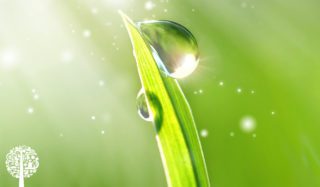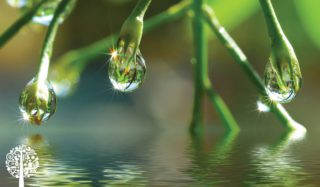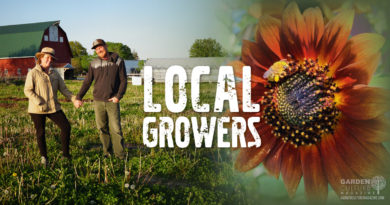Water, Light, And Controlled Environmental Agriculture |
Formed through an exothermic reaction powerful enough to launch rockets into space, the elemental combination of two hydrogens and one oxygen is the basis of all life on earth. Plants and the photosynthetic reaction are the most efficient mechanisms capable of breaking this powerful bond and providing all of us meat sacks the air we breathe.
Before the mudskipper emerged from the muck, dinosaurs, Caribbean fireballs, and before cockroach cousins and baby sharks, plants covered the world. Terra Verde. We owe a huge thanks to algae “lichenising” with fungal and bacterial cohorts for figuring out how to capture energy from the sun. We owe them for every waking moment we have as humans, literally, every breath.
Now that we have creatures capable of this magic, let’s fuck with them. Controlled Environmental Agriculture (CEA) is the art and science of growing plants by turning knobs, injecting solutions, and pushing all the buttons to make the best plants possible. Whatever the growers’ definitions of quality are, they are achievable by manipulating inputs to generate predictable and ever-improving outputs.
A Polar Molecule
Plants consist of 70-90% water. It is a solvent for all metabolic reactions, critical for photosynthesis and CO2 exchange, cell support and structure, and temperature regulation.
Evapotranspiration (ET) moves water against its natural propensity going from low to high, roots to leaves. Nutrients and natural compounds come into the plant’s system through this natural draw. As water migrates north in the Xylem, it carries up nutrition to deliver food to areas of new (apical, meristematic) and old growth. Specific molecules are more soluble and thus mobile (N+, K+, Mg+, etc.), and others are stickier and immobile (P, Ca2+, etc.). This is why you see nutrient deficiencies in differing parts of plants based on water’s ability to move them around.
The other layer of tissue in the vascular cambium responsible for moving nutrients around is the Phloem in translocation through osmosis and mass flow. Adequate amounts of water are required to keep the plant’s internal systems lubed up and running well. Nutrients move from areas of higher concentration to regions of lower concentration through osmosis. For example, you apply a high potassium fertilizer to the root zone. Along the evapotranspiration river, K+ ions slide in on tasty waves to head up and feed your plant. Potassium, by the way, is instrumental in stomatal conductance. Without enough K+, stomata cannot maintain turgor pressure to modulate their opening and closing. A plant may chug more water through unregulated gate cells, wreaking havoc on your crop. With this unfettered “dieseling,” unwanted amounts of other compounds like Na+ may come in through the vacuum. Just like a diesel engine will self-destruct if parameters are not in tune, a plant will quickly run out of water in an unbalanced system.
The Holy Trinity: Water, Plants, and Light
A key point to know about ET is that it helps regulate the temperature of leaves. There is a natural gradient from excellent to warm from the roots of plants to the leaves. If a canopy is overheated, it will increase the rate of transpiration. This is important, especially considering the differences in “traditional” light sources (HPS, CMH, and LED). High-Pressure Sodium lamps, in particular, have what is referred to as “forward throw” heat in horticultural lighting circles. Plants, especially sub-tropical fast-growing annuals, grow better when they are warmed to their ideal temperature ranges. LED sources lack this output, focusing purely on delivering photons in the PAR range. The light you use affects the amount of water your plants will need.
In the field and under the sun, plants are bombarded with energy. Some of this falls within the PAR range but much comes in infrared heat energy. Think about standing under the sun in the summertime. You metabolize and sweat to regulate temperature. Camping in the desert gets much cooler after sunset. We have a centralized coronary system, whereas plants are linear from roots to shoots. Photosynthesis in leaves is where water is drawn by hydrostatic tension and thermodynamic gradients to engage in a profound interaction.
6CO2+6H2OC6H12O6+6O2
How sweet it is when we come into the light. Turning water and CO2 into sugar and oxygen. How we feed photons to a plant indoors affects how efficiently this reaction happens. Historically, growers focused on the 1000 mmol on canopy target for fast-growing, annual fruiting crops for ideal return on inputs. This is an artifact of the days of growing under HPS when delivering anything higher would also provide too much infrared heat energy. You see double-enders mounted 3 ft above the canopy for a reason. Scorch, desiccation, and wilt will occur if the lights are mounted much closer. So that was it; until now.
Modern cultivators are now seeing an ROI up to 1800 mmol on canopy (this is an arbitrary setpoint, by the way, and one metric that deserves an article all on its own: PPFD v PPF/DLI). With the ability to throttle cultivation systems through precision water and nutrient delivery, optimized environmental controls allow for new heights that are outpacing even the best academics in crop science. One recent Upper Midwest cultivator shared 121 grams per square foot at over 36% THC. Call Guinness. Summertime sunshine here in Colorado approaches 3000 mmol, so I don’t think we have seen the peak yet for indoor cultivation.
You Can’t Manage What You Don’t Measure
Before this becomes an accounting exercise, let’s think more about water’s role in Controlled Environmental Agriculture.
Relative humidity is relative to the temperature it’s being held in. One hundred percent RH is different at 75 and 85°F. The latter can retain more moisture. That’s why when you toggle off your HPS for the night, the temp drops quickly. As a result, your data logger sees a spike, and your PLC-driven HVAC system has to work overtime to remove all that extra water from the air that was ten degrees cooler ten minutes ago. The same goes when you fire up those fixtures; all the dew set on the leaves overnight is instantly vaporized indoors. Without predictive analytics or preset trigger time, most HVACs cannot handle that load, and humidity can spike in a room, leading to various problems like pests and pathogens running wild.
LED fixtures take time to warm their heatsinks and then warm the air. A much more natural gradient for plants and dehumidifiers at lights on and out. When commercial cultivators and consultants are designing systems these days, they will be presented with psychrometric charts and a hefty price tag to mitigate RH and temp to the nth degree. Failure to pay upfront will mean paying on the back end. As growers get better and better at running LED, the first thing I always hear is, “you were right about the dehu; I just had to hang a few more to keep up with my girls at full tilt”.
The crux of lighting and water in the air is VPD. Vapor Pressure Deficit (more accurately, Vapor Pressure Gradient) is key to success in any successful indoor cultivation facility. These charts and strict adherence are the difference between “meh” and “oh MAN” when a crop comes down. Log, rinse, and repeat. Once you find the sweet spot for your genetics, you can begin to tick every other input up: CO2, nutrients, and temperature to see positive returns. You’ll want to focus on leaf canopy temperature rather than ambient. You can draw some correlations after you tweak your system but remember that plants are actively going to try and cool themselves down if overclocked. HPS canopies will run up to 7°F over ambient, and a well-oiled LED grow will run 2 degrees below ambient. As long as you control your root zone temps through irrigation, some LED rooms can run very hot and very (relatively) humid.
Now that your grow is vibrating on a higher level, it’s time to do some soul searching. You’ve found the fastest path to enlightenment. Now, you can start to think about wilding out. Herbs and tobacco will enhance their aromatic and oil properties when exposed to a bit of stress. This is key, and the emerging science of crop steering is commonplace in state-of-the-art cultivation facilities.
Non-Linear Equation
Keeping your crop moist and crisp or drying to the perfect moisture content is what can take A-grade to hay-grade in a matter of days. Crops like lettuce need to be high and tight to the plate, and other flowering crops need to be done just right to keep the end-user crisp. Water doesn’t stop working after you cut down your crop. In a sense, you want to slowly assist your crop in slowing metabolism down while aromatics remain intact and metabolites ripen to their fullest potential.
With growers, water, plants, and lights, it’s all about intention. So who will be the first to apply human consciousness into their water’s molecular structure to improve crop quality? Have some growers already released this secret by keeping the vibe high in the garden with music and mindfulness?
“The memory of life arrived on this earth carried by the soul of water. From this memory, life awoke, the human being emerged…”
― Masaru Emoto







